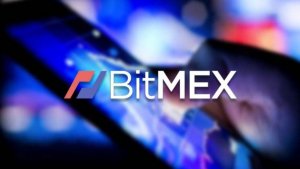What is a liquidity pool? How does it work?
A liquidity pool is smart contracts that allow traders to trade tokens and coins, regardless of the presence of buyers or sellers. Its main goal is to expedite trades between the assets and the exchange. If you are new to the cryptocurrency world, then the previous sentences likely added nothing to your understanding of it. It is a significant topic to comprehend since it allows users to trade tokens not listed on major exchanges, such as Coinbase or Binance.

A liquidity pool can be looked at as a pot of crypto coins inside a smart contract that can be used for trading coins. The possibilities, progressive technology, and superiority of liquidity pools become clearer when comparing them to current stock markets. The stock market uses an “order book model”. In simple terms, the buyers and sellers submit their orders for the amount of stock they want to buy and at what price. A trade takes place when both buyer and seller meet at the same price. This is extremely inefficient since you must set a price that someone else is willing to meet, meaning you might be forced to set a lower price or wait a long time for someone to meet your desired price.
The solution to this ineffective and, frankly, an outdated method is a liquidity pool that runs an algorithm, making buying or selling of an asset possible regardless of the price or time of day. The same cannot be said for the stock market since it is not open at all hours. A liquidity pool is a pool of money that contains both crypto tokens that you want to trade. It starts with two crypto coins, deposited in an exact 50:50 value ratio. The algorithm will maintain the 50:50 value ratio at all times. To illustrate, we will use ETHERIUM (ETH) and GRAPH (GRT) tokens.
You would like to purchase GRT tokens from the pool using Etherium. You would send your ETH to this pool and receive back GRT. As GRT tokens are purchased and are removed from the pool, the algorithm slowly raises the price of GRT tokens and lowers the price of each ETH token since it wants to maintain the ratio of the two coins within the pool at 50:50. This is simply supply and demand: surplus means a smaller price and deficit leads to a higher price. As the supply of GRT goes down, the price goes up. As the supply of ETH tokens in the pool goes up, the cost of each ETH token goes lower. Thus, the 50:50 ratio is kept at all times.
For this to work, the pool must have a steady supply of the two tokens. Where do these tokens come from? This is where the crypto liquidity provider plays a crucial role. As stated above, a pool starts with an exact 50:50 value ratio. Thus, the liquidity provider must deposit an equal value of each token. Swapping becomes seamless when numerous liquidity providers are participating but riskier if there are few. What are the benefits of providing liquidity? When a crypto liquidity provider locks his coins within the pool, he is rewarded with LP tokens (liquidity pool tokens). Additionally, a percentage of the fees that are paid by traders who use this pool is split among the holders of the LP tokens. These fees can add up to substantial amounts of money.
Why is it important for an exchange to be as liquid as possible? Crypto exchange liquidity describes how easily a token can be sold or bought. The only way to increase liquidity is to attract more users to the platform. Hence, exchange liquidity is a crucial factor when selecting an exchange. An exchange that is highly liquid provides stability of the market and ensures that prices are not prone to wild swings due to large trades; this is an important factor in protecting users against manipulation. Also, exchange liquidity affects the technical analysis. In a liquid, stable market, chart formations are more developed, precise, and accurate. Higher liquidity also makes faster transactions possible, directly affecting your gains. Considering the volatility of the crypto market, the ability to act fast can have a serious impact on your profits.
As cryptocurrency carries on in gathering worldwide exposure and mass adoption, liquidity pools will undoubtedly grow and evolve. They have already played an essential role in the expansion of decentralization and more use cases are coming in the future. While this allows for great investment opportunities, make sure to do your research.









